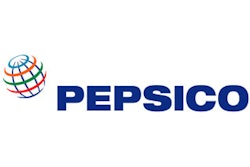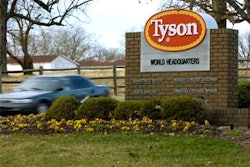BELLVUE, Wash. (The Hartman Group) — Marketing to the Hispanic consumer is now a worn-out refrain. For the past two decades (at a minimum), America’s businesses have been on a quest to connect with the nation’s largest ethnic and fastest-growing demographic group. It is a mission to cash in on opportunities for future revenue growth, but also a journey fraught with peril for those marketers that cling to what often passes for “Hispanic marketing,” a tired approach that rests more on stereotypes than it does on the realities of modern acculturated Hispanic households.
Today’s marketers are chasing the imagined needs and desires of the smallest percentage of Hispanic consumers—the unacculturated Hispanics. In this pursuit, these marketers are unwittingly bypassing the greater opportunity targets: the acculturated and bicultural Hispanic consumer (who actually behaves more like the 83% of the non-Hispanic U.S. population).
There is certainly reason to target Hispanics: U.S. Census data projects the Hispanic population of the U.S. to triple in size, from 52 million in 2011 to 132.8 million by 2050. This group has significant buying power, currently spending over $1 trillion annually and forecast to increase 50% to $1.5 trillion by 2015.
While we share this sense of optimism for the opportunities that Hispanic consumers represent, we are also keenly aware of the significant complexities that lie ahead for those wishing to woo this most diverse consumer group.
Despite food-marketing standards to the contrary, one Hispanic type does not exist. As Gourmet magazine’s iconic editor, Ruth Reichl, once observed in her editor’s letter, “There are few places in America where the influences of the people who have come here from Mexico, Puerto Rico, El Salvador, Cuba, the Dominican Republic, Guatemala, Colombia, Ecuador, and Peru is not being felt.”
The U.S. Hispanic population ranks second worldwide; only Mexico has a larger Hispanic population. Of Hispanic-origin consumers in the U.S., 63% were of Mexican background in 2010. The balance of the Hispanic population is a blend of diverse backgrounds including Puerto Rican (9.2%), Cuban (3.5%), Salvadoran (3.3%) Dominican (2.8%), and other Central American, South American, and Hispanic/Latino origins.
As Greg Prang, Ph.D., senior ethnographic analyst at The Hartman Group, points out, within each country, vast differences exist among Hispanics, ranging from socio-economic differences to regional differences based on the cultures of individual states in those countries.
“There might be hundreds of tribal languages in Mexico,” notes Prang. “There’s as much difference between people from Monterrey and those from Oaxaca as there is between Miamians and Clevelanders, or more, so it’s hard to break it down to marketing to just one type, for sure.”
Without question, then, the single greatest challenge facing those courting the Hispanic consumer is to overcome our tendency to generalize and simplify from our own limited, often idiosyncratic experiences.
As our analysts can attest from their own immersions in these cultures, there’s a big difference between new immigrants who speak little English and received little education, and Hispanics who have lived for years in the United States or came from countries with ways of life that are virtually the same as the United States.
“Marketers lose sight of the fact that the majority of Hispanics in the U.S. are born here. There is another large percentage of educated Latino consumers who came to this country assimilated and used to American customs,” explains Amy Sousa, Ph.D., ethnographic analyst at The Hartman Group. “Quite frankly, Latin America isn’t that different. Marketers seem to be fixated on targeting the smallest segment of Hispanics consumers—those who less educated, still learning English and not yet fully acculturated. This is not where the greatest opportunities lie.”
Reaching the Hispanic Consumer—Market to Millennials
Taking into consideration the diverse cultural composition and exploring the demographic dynamics, our cultural analysts believe the most effective way to reach Hispanics is by marketing to Millennials. Why Millennials?
“Millennials tend to be younger as a group, because they are,” explains Sousa. “Recent census data shows that the median age of U.S. Hispanics is 27. They’re adventurous with foods, they eat Thai food, they eat various kinds of food, but they don’t think of their actions as exotic. They don’t think, ‘today I’ll try teriyaki.’ It’s just food to them.”
Connecting with a younger demographic increasingly involves the Internet. We know from our research that Hispanics over-index in terms of social media. They use smartphones and mobile Internet more than non-Hispanics. To get Millennials’ attention, marketers should consider moving beyond traditional forms of media, such as TV ads and printed circulars, and look toward emerging marketing technologies such as mobile couponing and user-generated content.
Social technology and media are not the only effective ways to reach Hispanics. Sousa and Prang agree that Hispanic consumers have an appreciation for fresh foods and are willing to take food chances.
“Someone who is Hispanic, and very food-forward, is going to look for natural, fresh, quality ingredients,” says Sousa. “It’s about fresh food and being able to cook it and consume it as a family.”
Are there any food companies effectively reaching Hispanics? Sousa admires Frontera Foods, the line of salsa, chips, chili starters and other products from chef Rick Bayless, for “consciously trying to be respectful of how food should properly taste.” This is because Bayless, whose cookbook Authentic Mexican: Regional Cooking from the Heart of Mexico was ground-breaking in the U.S. in 1987, has taken his staff to Mexico, Sousa points out, “and works hard to have authentic food.”
Also, while all major grocery stores have small Hispanic areas, some stores reach Latinos more effectively, Sousa has noticed. “Someone I interviewed recently, a young Latino male, an immigrant, mentioned that Trader Joe’s has prepared Mexican foods that taste authentic, and that he’s been shopping there since discovering that.”
On the flipside, brands that are seen as serving “an American parody of Mexican food,” such as El Paso salsa, are viewed as inauthentic.
“People carry their own food baggage (from their countries of origin),” says Prang. “What's normal to them is to eat the same thing they're used to, but second-generation kids go to school and have food in the cafeteria and become acculturated.”
People tend to shop by habit, whether living in the U.S. or back in Colombia. There is a misperception that Hispanics who arrive in this country are being exposed to American brands for the first time. The reality is that so many major brands today are established global brands. In Mexico City, for instance, American brands and Mexican brands are side by side. When immigrants come to America, the Mexican brands are gone, but the American brands are still there, so the Mexican-Americans choose those in many cases.
Prang hasn’t noticed any companies or stores doing Hispanic marketing in an interesting way. “I’ve seen some Mexican or other non-U.S. companies put up banners on stores in barrios or Hispanic areas,” he says. “If they’re successful, it’s not because of the advertising, but because people will continue to buy the same foods they’re familiar with, if they’re available in this country.”
The key to reaching beyond habitual buying is to pay attention to culture and food quality, thinks Sousa: “To the extent that CPG makers can provide authentic foods, there’s a market there—not only for Hispanics, but for people who appreciate global flavors.”
Consumer Trends: Marketing To Hispanic Consumers
Marketing to the Hispanic consumer is now a worn-out refrain. For the past two decades (at a minimum), America’s businesses have been on a quest to connect with the nation’s largest ethnic and fastest-growing demographic group. It is a mission to cash in on opportunities for future revenue growth, but also a journey fraught with peril for some marketers.
Oct 18, 2012
Latest in Operations
Sonair Accelerating Rollout of 3D Ultrasonic Sensor for Robots
September 17, 2025






















